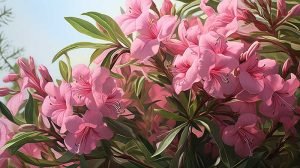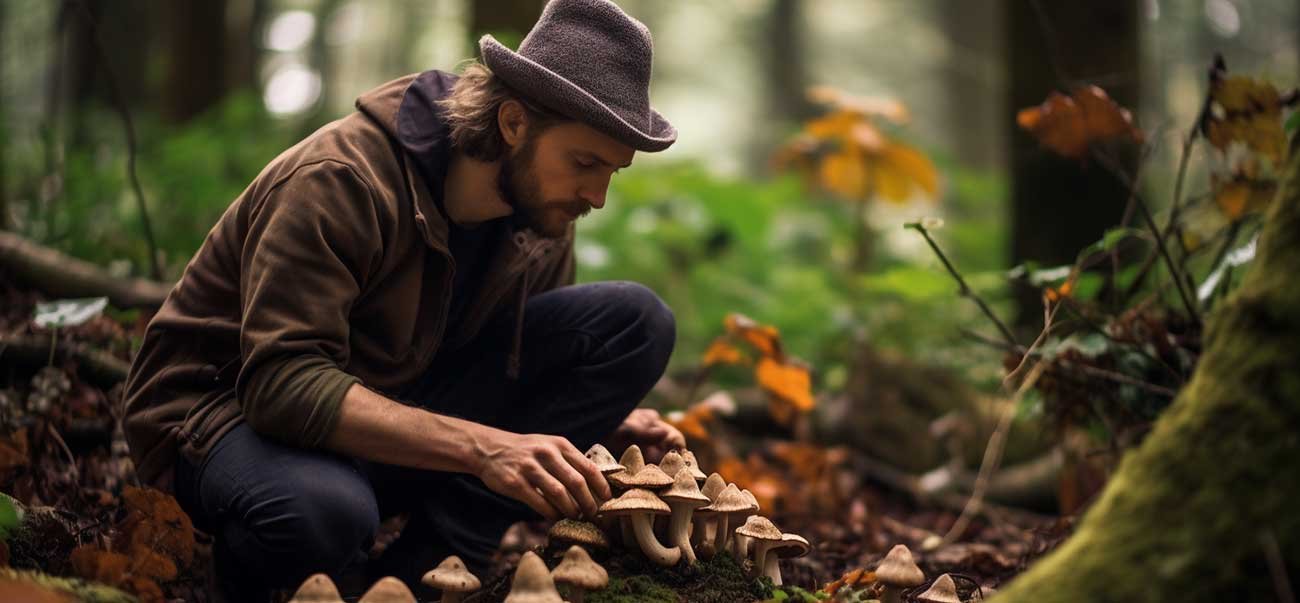Hey folks, ever heard of how to safely forage? It’s not just for the birds! In fact, it’s making a big comeback as a sustainable practice. We’re talking about getting back to our roots, literally. It’s all about safety, nutrition, and a connection to Mother Nature herself.
So, what’s foraging all about? Well, it’s the act of searching for and collecting food resources in the wild. It’s like the ultimate grocery shopping, but instead of aisles, you’ve got forests, fields, and riverbanks. And instead of plastic, you’ve got the sweet smell of earth and wildflowers.
But hey, before we get too excited, it’s vital to understand the importance of safety and nutrition when foraging. Not every berry or mushroom out there is your friend, so we need to be cautious, knowledgeable, and respectful of what we’re putting in our baskets (and bodies!).
Understanding the Basics of Foraging
Foraging involves a lot more than just picking stuff off the ground. It requires knowledge of the plants, fungi, and even insects around us. And guess what? The benefits of foraging go beyond just filling our bellies.
First off, you’re connecting with nature in the most primal way possible when you learn how to safely forage. Your ancestors did it, so why not you? You’re following in the footsteps of millions of years of human history, buddy!
Second, the nutritional value of wild foods can be fantastic. You’re getting fresh, organic, and seasonal food that’s often packed with nutrients. Plus, it’s a sustainable practice that can help reduce your environmental impact. Win-win, right?
The Ethics of Foraging
Now, onto the ethics of foraging. We’re not just plundering nature’s pantry here. It’s crucial to forage sustainably and ethically. That means taking only what you need, not damaging plants or their habitats, and leaving no trace behind.
Think of it as an unwritten contract between you and the great outdoors. You get to enjoy nature’s bounty, but you’ve got to respect her rules.
Essential Tools for Foraging
Ok, let’s talk gear. When it comes to foraging tools, you don’t need much. A good basket or bag, a field guide for identifying edible plants, a pair of sturdy gloves, and a small knife or scissors should do the trick.
Remember, quality matters. A well-made tool can make your foraging experience more efficient and enjoyable. Plus, it’ll last longer, which is better for your wallet and the environment.
How to Identify Safe and Nutritious Wild Foods
This is where the rubber meets the road, folks. Identifying safe and nutritious wild foods is a skill, and like any skill, it takes practice. General rules to follow include: don’t eat anything you can’t positively identify, avoid plants growing near roads or polluted areas, and when in doubt, leave it out.
Also, beware of common poisonous plants. Nature has a way of saying “hands off” with some seriously nasty toxins, so be sure you know what to avoid.
First off, let’s talk about the Deadly Nightshade (Atropa belladonna). The name says it all – this plant is not your friend. It’s got shiny black berries that might look tempting, but they’re packed with toxins that can cause everything from hallucinations to respiratory failure.
Then there’s Poison Hemlock (Conium maculatum), which was famously used to execute the philosopher Socrates. This plant is incredibly toxic and can be mistaken for wild carrots or parsnips due to its similar appearance. Consuming even a small amount can result in severe poisoning or death.
 Another one to steer clear of is the Oleander (Nerium oleander). It’s a beautiful shrub with pink or white flowers, often found in gardens and parks. But don’t let its beauty fool you. Every part of this plant is poisonous and can cause problems ranging from digestive upset to heart disturbances if ingested.
Another one to steer clear of is the Oleander (Nerium oleander). It’s a beautiful shrub with pink or white flowers, often found in gardens and parks. But don’t let its beauty fool you. Every part of this plant is poisonous and can cause problems ranging from digestive upset to heart disturbances if ingested.
And let’s not forget about Foxgloves (Digitalis purpurea). This plant has lovely bell-shaped flowers, but it contains compounds that can seriously mess with your heart. It’s used in heart medications, but in its raw form and in the wrong doses, it’s a killer.
Last but not least, there’s the Jimson Weed (Datura stramonium), also known as Devil’s Trumpet. It’s got large, trumpet-shaped flowers and spiky seed pods. Ingesting any part of this plant can result in hallucinations, seizures, and in severe cases, death.
These are just a few examples, and there are plenty of other poisonous plants out there. The key is to educate yourself and never eat anything you can’t positively identify as safe. When in doubt, leave it out, folks. Foraging is a fantastic activity, but safety should always be the number one priority.
On the flip side, there are plenty of nutritious and commonly foraged foods to fill your basket with. Morels, ramps, dandelions, blackberries – the list goes on.
Region-Specific Foraging Guidelines
It’s also important to understand the unique flora of your region. What grows in North America might not be found in Europe or Asia, and vice versa. Local field guides and foraging courses can be invaluable here.
Foraging Safety Tips
Safety first, people. Always let someone know where you’re going and when you’ll be back. Dress appropriately for the weather and terrain, and keep a first-aid kit handy.
And what if you accidentally munch on a poisonous plant? Don’t panic – but do seek medical help immediately. Some reactions can be delayed, so even if you feel fine, it’s best to play it safe.
Here are some key points to remember:
- Inform Someone of Your Plan: Always let someone know where you’re going and when you expect to be back. This is especially important if you’re going into remote or dense wilderness areas.
- Dress Appropriately: Wear long pants and sturdy shoes to protect against thorns, insects, and rough terrain. Consider the weather too – you don’t want to be caught in a downpour without a waterproof jacket or in a heatwave without a hat and sunscreen.
- Carry a First-Aid Kit: It’s always smart to have a first-aid kit on hand for any scratches, stings, or unexpected injuries. This should include bandages, antiseptic wipes, tweezers (for tick removal), and any necessary personal medication.
- Stay Hydrated and Well-fed: Foraging can be physically demanding, especially if you’re hiking in challenging terrain. Bring plenty of water and some high-energy snacks to keep your strength up.
- Be Aware of Your Surroundings: Watch out for dangerous wildlife, steep cliffs, and fast-flowing rivers. Always stay alert and aware of your surroundings.
- Avoid Foraging Near Roads or Polluted Areas: Plants near roads can absorb pollutants from the traffic, and those near fields could have been sprayed with pesticides. Always forage in clean, unpolluted areas.
- Know How to Handle Poisonous Plants: If you come across a poisonous plant, avoid touching it if possible. Some plants can cause skin irritation or allergic reactions. If you do touch a poisonous plant, wash the area thoroughly with soap and water as soon as possible.
- Learn the Universal Edibility Test: This test involves a series of steps to determine if an unknown plant is safe to eat. It includes steps like testing for skin reaction, mouth reaction, and more, and is designed to be a last resort in survival situations.
Remember, the most important rule of how to safely forage is to never eat anything unless you’re 100% sure it’s safe. When in doubt, leave it out.
How to Prepare and Cook Foraged Foods
Once you’ve got your wild foods, it’s time for the fun part: cooking them up! Cleaning and preparing foraged foods is similar to store-bought produce, but you’ll want to be extra thorough to remove any dirt, bugs, or other “extras.”
Then, get creative in the kitchen! Foraged ingredients can inspire some seriously delicious and unique dishes. Think dandelion salad, sautéed ramps, blackberry pie – the possibilities are as vast as nature herself.
So there you have it, folks: foraging 101 on how to safely forage. It’s an incredible way to connect with nature, feed your body with nutritious foods, and live more sustainably. It requires knowledge, respect, and a sense of adventure, but the rewards are worth it. I encourage you to give it a try – you might just find it’s the most satisfying meal you’ve ever had.
Frequently Asked Questions
Q: Is foraging legal? A: It depends on where you are. Always check local laws and regulations before you forage. In some places, it’s perfectly legal, while in others, it may be restricted or prohibited.
Q: How do I know if a plant is safe to eat? A: When in doubt, don’t eat it. Only eat plants you can positively identify as safe, and when starting out, stick to common and easily identifiable species.
Q: Can I forage in any season? A: Yes, but what you’ll find changes with the seasons. Spring might bring wild greens and mushrooms, summer is great for berries, fall offers nuts and roots, and winter, while more challenging, can still yield edible treasures.
Q: What’s the best way to learn about foraging? A: Books, online resources, and local foraging groups or classes are all great ways to learn. Experienced foragers can share their knowledge and help you learn to identify edible plants in your area.
So there you have it. Get out there, be safe, and happy foraging, folks!
